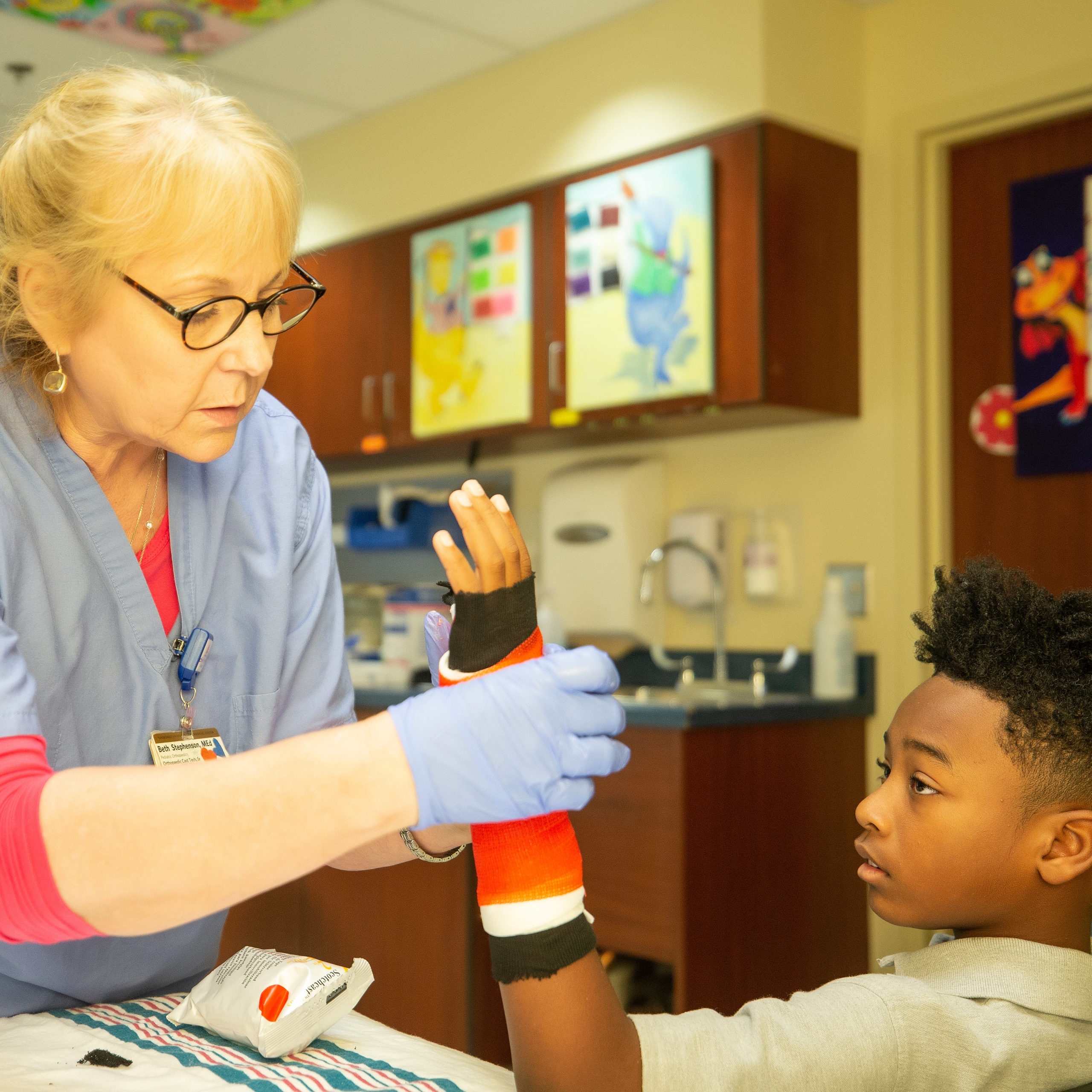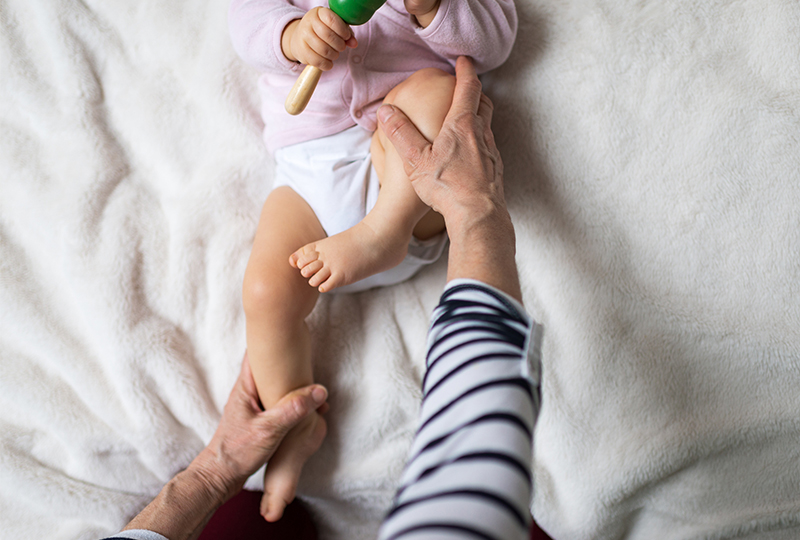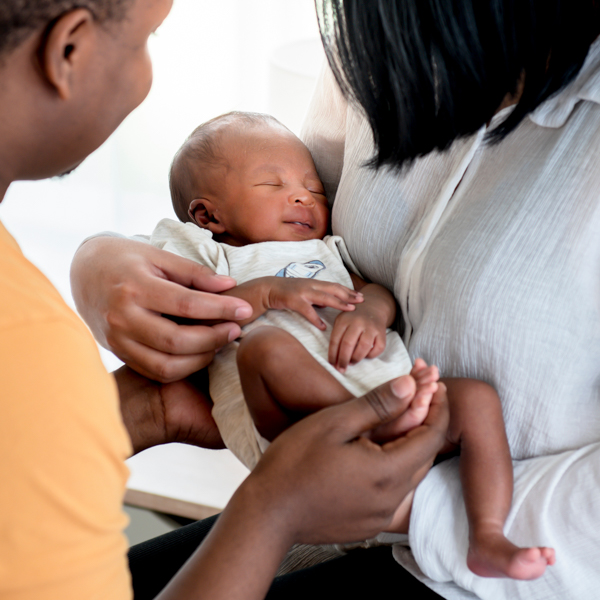Most babies born with hip instability develop and grow normally without significant intervention.
Hip dysplasia is one of those concerning terms that many people don’t hear until they have a newborn. If your pediatrician has mentioned it, you’re probably wondering what it is and how it will affect your baby’s growth and development.
What is hip dysplasia?
Hip dysplasia is an umbrella diagnosis that simply means there is instability in the hip joint(s). It is most often present at birth; however, it can develop in the first few weeks of life for unknown reasons. It is generally not painful in newborns. Severity ranges from mild to severe.
In mild cases, the ligaments supporting the hip joint are loose, causing the joint to be slightly unstable. Most of these cases resolve on their own as the baby’s ligaments strengthen over time. Moderate cases may involve a partially dislocated hip, called subluxation, where the ball of the hip joint is not fully seated in the socket. The most severe form is a full dislocation, where the ball of the hip joint is entirely out of the socket from birth.
How common is hip dysplasia?
It seems to be relatively common in newborns — some experts estimate about 1 in 10 babies are born with some degree of hip instability.
“It’s challenging to say how common hip dysplasia is,” said Dr. Courtney Baker, an orthopedic surgeon at Monroe Carell Jr. Children’s Hospital at Vanderbilt. “Hip dysplasia is actually a spectrum of diseases, and it’s fairly common for children to be born with or have some mild forms of hip dysplasia that improve with time.”
It’s believed that about 90% of babies outgrow mild hip dysplasia as their ligaments get stronger and grow tighter.
Who is most likely to have it?
“The classic risk factors are being female, being in a breech position, being the firstborn child and having a family history of hip dysplasia.”
It can occur in any newborn. Some babies are at higher risk based on certain factors.
“The classic risk factors are being female, being in a breech position, being the firstborn child and having a family history of hip dysplasia,” Baker said.
Twins or multiples may also be at a slightly higher risk due to the crowded conditions in the womb.
Diagnosing hip dysplasia
Babies with risk factors for hip dysplasia should be evaluated by a pediatrician, who may use a combination of physical exam and imaging technology to screen for the condition.
The American Academy of Pediatrics recommends female babies who were in a breech position be evaluated for it by an ultrasound at 6 weeks old. If hip dysplasia is found, ask your pediatrician for a referral to a specialist — usually a pediatric orthopedic surgeon.
Treatment options in newborns
Most mild cases resolve on their own as the baby grows, but if intervention is necessary, the standard treatment is a Pavlik harness.
“The vast majority of families with children who have hip dysplasia get either education on ‘hip-happy’ positions because their findings are so mild, or the child is treated with a Pavlik harness,” Baker said. “The harness is essentially a brace that puts the hip in a ‘happy’ position all the time and encourages the ball of the hip joint to be well seated in the socket,” Baker said.
The Pavlik harness is worn full-time for several weeks, with periodic ultrasounds to track progress.
In more severe cases, in which the hip is dislocated and does not stabilize with a harness, surgical options may be considered.
“For those babies, we move into either closed reduction, where we put the hip in place without any cuts in the skin, or open reduction, where surgery is needed to manually relocate the hip,” Baker explained.
These cases are rarer, but the outcomes are generally positive with early intervention.

Personalized Pediatric Orthopedic Care
The Pediatric Orthopaedics program at Monroe Carell Jr. Children’s Hospital at Vanderbilt offers the region’s most advanced care in a family-friendly environment. Monroe Carell providers are all specialty trained and offer non-surgical and surgical options to treat a range of pediatric problems, including the most complex conditions. Programs and services include general orthopedics and fracture care; care for scoliosis, cerebral palsy, spasticity and osteogenesis imperfecta; a hip preservation clinic; and more.




